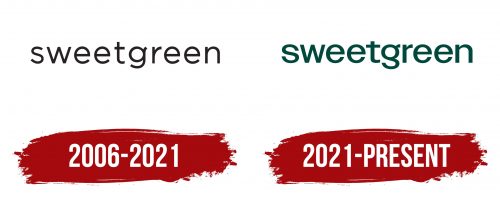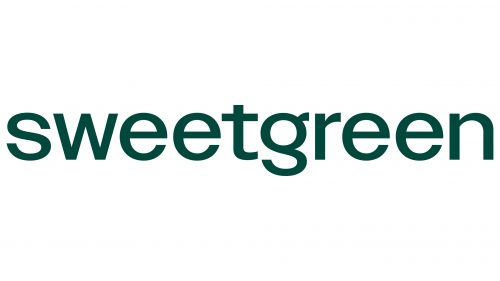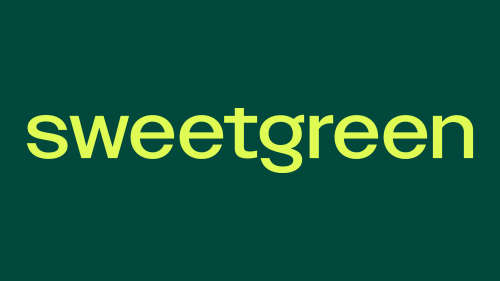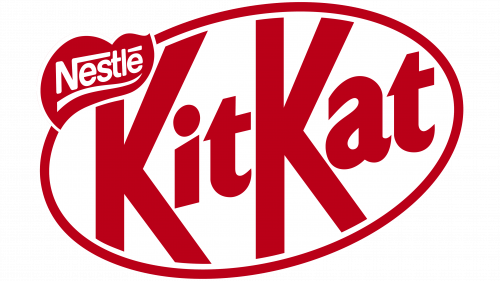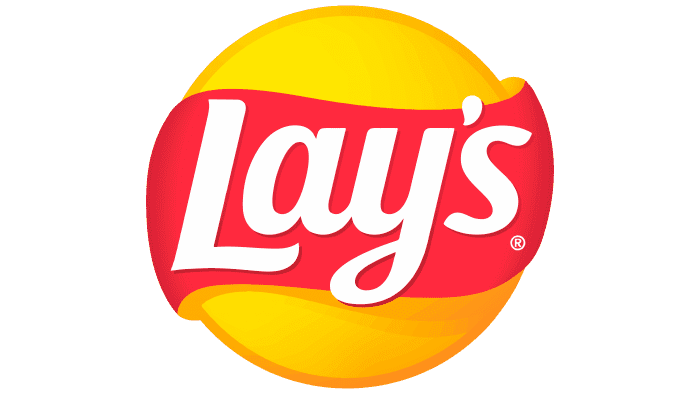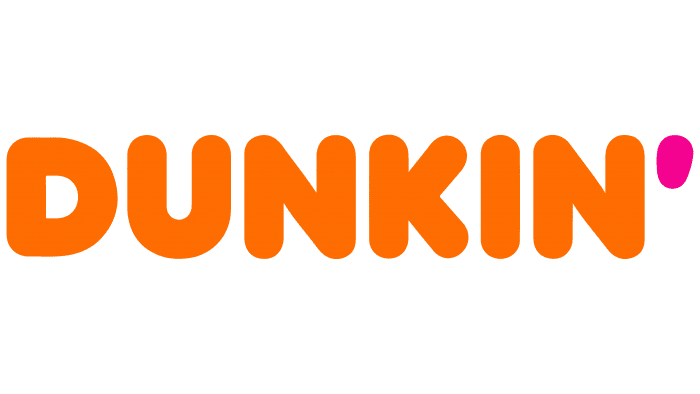The business logo of Sweetgreen indicates that the company it represents is characterized by a strictly business approach to business in particular and marketing in general. Its simple style proves that the owner does not want to overload the visual identity with extra images and intends to focus on the main thing.
Sweetgreen: Brand overview
Sweetgreen is a chain of fast-food restaurants specializing in salads. It changes its menu five times a year, focusing on the seasonality of products and their availability in each specific region. That is, depending on the restaurant’s location, its product range is individual and different from other locations. The company also owns a namesake mobile application, a delivery service, and an internet service for orders with tracking capability. It was founded in 2006 by three Georgetown University students: Jonathan Neman, Nathaniel Ru, and Nicolas Jammet. The central office is located in Los Angeles, California, having moved there from Washington.
In 2007, in Georgetown, D.C., three Georgetown University grads, Nicholas Jammet, Jonathan Neman, and Nathaniel Ru, were fed up with the lack of healthy fast food. So, they started Sweetgreen to offer fresh, healthy meals fast. Their first spot in Georgetown quickly became popular, offering more than just salads but a promise of good, sustainably sourced food.
Sweetgreen grew fast, opening over 20 spots on the East Coast by 2014. This growth caught investors’ eyes, leading to a significant investment of $18.5 million. But Sweetgreen didn’t just grow; it also used technology to improve the customer experience and was committed to transparency about where its ingredients came from.
By 2015, Sweetgreen had launched a mobile app and loyalty program, reaching more customers. Despite the challenge of the COVID-19 pandemic, which forced them to close dine-in services and focus on delivery and pickup, Sweetgreen adapted quickly, maintaining its commitment to the community.
In 2021, Sweetgreen went public on the New York Stock Exchange, raising about $364 million and showing how far they’ve come. Now, with over 150 locations and a strong online presence, Sweetgreen continues to prove that fast food can be both good and good for you, changing the way we think about eating on the go.
Meaning and History
Paradoxically, the start of these restaurants was prompted by dissatisfaction with food. Students at Georgetown University were disappointed with the quality of meals on campus; they wanted better food, so they created their fast-food establishment. Borrowing money from relatives and obtaining a loan, Jonathan Neman, Nathaniel Ru, and Nicolas Jammet raised the necessary amount themselves.
The work began with conceptualizing, so visual identity was secondary. The young men were more concerned about choosing the menu, and for the Sweetgreen logo, they used the name in a minimalist format. Initially, it was written as “swɘetgreen” with the letter “e” turned leftward. Moreover, the logo of the eateries fully supports their visual style: it serves as a signboard, print on uniforms, app icon, packaging branding, internal decoration of restaurants, and the “face” of the brand on social media.
What is Sweetgreen?
Sweetgreen is a chain of fast-food restaurants in the USA, founded in 2006 by students Jonathan Neman, Nathaniel Ru, and Nicolas Jammet, who were studying at Georgetown University at the time. The first establishment, presented as swɘetgreen, opened in Washington and later moved its headquarters to Los Angeles (California). In 2021/2022, the chain included 221 locations in 18 states.
2006 – 2021
The emblem is textual. It features just one element—the restaurant chain’s name, whose main dish is salad in various variations. The inscription is single-line, two-dimensional, and black, balanced with angles and roundings. All letters are in lowercase, without serifs, and are moderately bold. Although the spacing between characters is not minimal, the glyphs are optimally distanced from each other, making the text appear whole and compact. Such a print is conveniently applied to employee uniforms.
2021 – today
After a comprehensive redesign, affecting not only the logo but all components of the brand’s visual identity, Sweetgreen acquired a new style – confident, modern, and adaptive. As the company representatives themselves say, it is inspired by ancient cookbooks, written and illustrated by hand, hence the emblem’s minimal details. At the same time, the restaurant chain received a flexible yet robust design system, working on a scale as an emblem, signboard, marking, digital icon, and uniform print.
The inscription is still in lowercase: there is no capital letter, even at the beginning. However, there is a significant difference from previous versions: the glyphs in the name are correctly placed, meaning the first “e” is no longer turned to the left. The latest update also approved a different color scheme: the fast-food’s salad-colored name on a dark green background. Employees of the company and representatives of the consulting firm Collins participated in the rebranding. As a result of this creative tandem, the entire design of the fast-food chain was changed.
Font and Colors
The inscription in the Sweetgreen logo is in lowercase printed block font, resembling the Axiforma Book (one variant). Another typeface is custom: it is a rework of the owner’s font, SweetSans.
Of course, the fast-food chain, offering salads based on various greens and vegetables, included green color in its corporate palette. Now, a bright salad-colored inscription stands out on the dark green background of uniforms, signboards, packages, and other paraphernalia. This color is called “kale.”
FAQ
Why is Sweetgreen so expensive?
Sweetgreen’s prices are higher than those of some other places, and there’s a good reason for them. First, Sweetgreen shops in popular, busy areas with high rent. These spots attract a lot of people, but they’re expensive.
Making Sweetgreen’s fresh meals takes a lot of work. They prepare everything by hand, from cutting the veggies to putting the salads together. This means they need a lot of staff to ensure each meal is right, which adds to their costs.
Also, opening a Sweetgreen restaurant costs a lot of money. They invest in making each location look good and fit the Sweetgreen style, from the layout to the kitchen equipment needed for their fresh menu.
So, when you pay more at Sweetgreen, you get quality food made with care in a welcoming place. It’s about more than just the food; it’s the whole experience and the values they stand for, like sustainability and supporting local communities.
Why is Sweetgreen so popular?
Sweetgreen has become a hit, especially with younger people, because it matches what they care about: health, the environment, and quick, tasty food. It’s not just about salads; Sweetgreen offers a whole experience that fits what young folks want today.
Their menu is all about fresh, healthy eating. They use quality ingredients that are often local and organic, meeting the demand for food that’s good for you and the planet. This approach is a big deal for people who want to eat well without sacrificing flavor.
Sweetgreen knows how to reach its audience, too. Their marketing is savvy and digital, speaking directly to how young people use media and social networks. They promote a lifestyle about more than just eating; it’s about being healthy, caring for the environment, and being part of a community.
They’ve also positioned their stores in city spots where they know their target customers, like yoga enthusiasts and busy students, are looking for quick but nutritious meals. This convenience is key for people on the go.
Moreover, Sweetgreen’s dedication to being eco-friendly and supporting local farms speaks to younger customers who want to support businesses that positively impact the world.
In short, Sweetgreen’s success comes from more than just its food. It’s about offering fresh, tasty meals while standing for things that matter to younger generations, like sustainability and community. This has made Sweetgreen a favorite for anyone looking for fast, health-conscious food that fits into a modern, aware lifestyle.
What font does Sweetgreen use?
Sweetgreen thinks things through, even down to the fonts they use. They chose a font called Owners from the MCKL type foundry because it’s clean, modern, and flexible. Then, they customized it to show off what Sweetgreen is all about. This means playing around with certain letters to ensure the font captures Sweetgreen’s fresh, quality, and sustainable vibe.
They didn’t stop there. They also created a special version called SweetSans, which comes in different styles and weights. This lets them use the font in all sorts of ways, whether they need something bold or more laid-back.
A big part of their branding is a monogram with their logo. It’s another way to ensure people recognize Sweetgreen at a glance, tying back to their focus on fresh and quality food.
By putting so much thought into their font, Sweetgreen isn’t just making their brand look good. They’re ensuring everything they do tells their story, from the big things like their salads to the small things like the type on their menu. It’s all about showing their dedication to great food and a great experience.
Is Sweetgreen a company?
Sweetgreen, Inc. is a fast-growing American restaurant that focuses on healthy salads. It was started in November 2006 by Nicolas Jammet, Nathaniel Ru, and Jonathan Neman. They wanted to offer more than just food; they aimed to promote a healthier lifestyle.
What makes Sweetgreen stand out is its commitment to quality and nutrition. Its ingredients are sourced from local farmers, ensuring everything on the menu is fresh and sustainably produced. Sweetgreen cares greatly about the environment, as shown in its restaurant design and eco-friendly packaging.
Sweetgreen has become quite popular, especially with young people who care about eating healthy and being kind to the planet. Starting from a single spot in Georgetown, it’s now a big name nationwide. This growth shows a real demand for food that’s good for you and the earth. Sweetgreen keeps innovating and growing, changing the fast-food scene by focusing on health, community, and sustainability.

